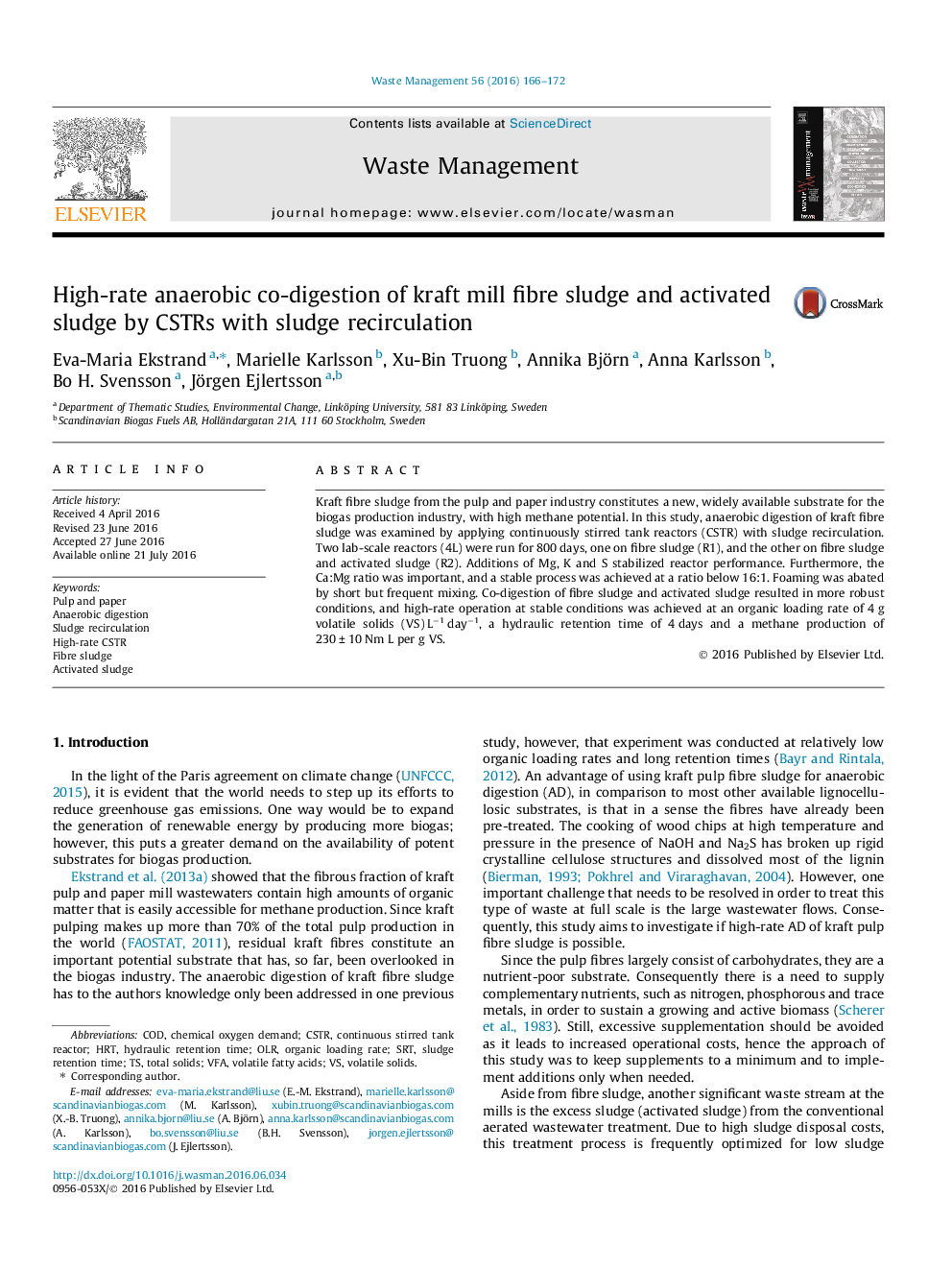| Article ID | Journal | Published Year | Pages | File Type |
|---|---|---|---|---|
| 4471125 | Waste Management | 2016 | 7 Pages |
•High-rate AD of kraft fibre sludge was possible in a CSTR with sludge recirculation.•A HRT of 4 days and an OLR of 4 g VS L−1 day−1 was achieved at stable conditions.•The Ca:Mg ratio and additions of K and S were important for process stability.•Co-digestion with activated sludge allowed for higher organic loading rates.•Foaming was abated by short but frequent mixing.
Kraft fibre sludge from the pulp and paper industry constitutes a new, widely available substrate for the biogas production industry, with high methane potential. In this study, anaerobic digestion of kraft fibre sludge was examined by applying continuously stirred tank reactors (CSTR) with sludge recirculation. Two lab-scale reactors (4L) were run for 800 days, one on fibre sludge (R1), and the other on fibre sludge and activated sludge (R2). Additions of Mg, K and S stabilized reactor performance. Furthermore, the Ca:Mg ratio was important, and a stable process was achieved at a ratio below 16:1. Foaming was abated by short but frequent mixing. Co-digestion of fibre sludge and activated sludge resulted in more robust conditions, and high-rate operation at stable conditions was achieved at an organic loading rate of 4 g volatile solids (VS) L−1 day−1, a hydraulic retention time of 4 days and a methane production of 230 ± 10 Nm L per g VS.
